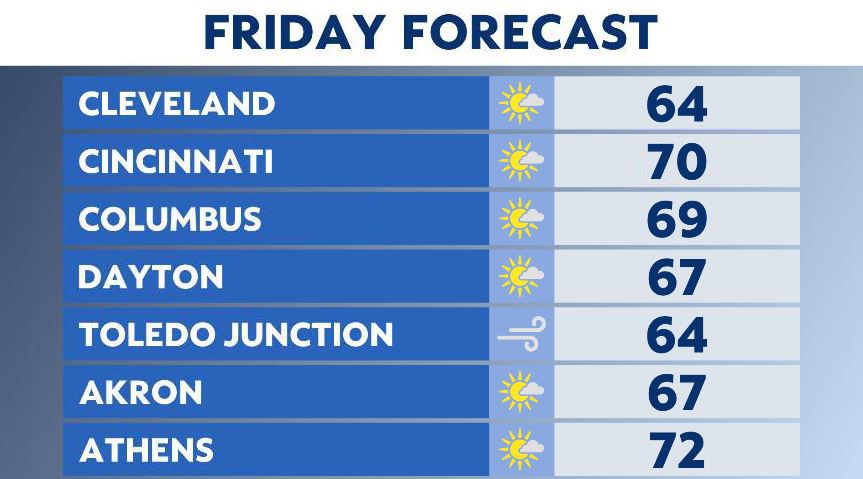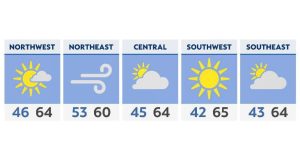COLUMBUS, Ohio — A three-judge federal court panel denied a motion to block the certification of congressional race results in the May 3 primary in Ohio.
What You Need To Know
- A three-judge federal court panel denied a motion to block the certification of congressional race results in the May 3 primary in Ohio
- The judges rejected the motion on a technicality and not on merits or substance, because the issue reportedly took place in the northern part of the state, that is where the group should have filed
- A group of Black Youngstown voters said the congressional map creates racial inequities in their area
- The judges also said they are “receptive” to hearing more about the racial gerrymandering accusations if it first gets filed elsewhere
The judges rejected the motion on a technicality and not on merits or substance, meaning basically the judges said because the issue reportedly took place in the northern part of the state, that is where the group should have filed.
A group of Black Youngstown voters, including the Rev. Kenneth Simon, a pastor in Youngstown, said the congressional map creates racial inequities in their area. The group is intervenors in the federal legislative redistricting case and the judges said listening to congressional redistricting concerns at the same time in the same case would be problematic.
The judges also said they are “receptive” to hearing more about the racial gerrymandering accusations if it first gets filed elsewhere.
The Simon group did originally sue in the Northern District of Ohio but eventually dropped it because a judge there wanted to wait to see how things played out with redistricting first.
In an email, Percy Squire, the attorney for the Simon intervenors, told Spectrum News 1 he will refile Wednesday in the Northern District.
The map adopted by Republicans on the Ohio Redistricting Commission favors the GOP in at least 10 of the state’s 15 congressional districts including in the Youngstown area.
Spectrum News 1 legal analyst Rory Riley-Topping said the court made the right decision.
“The party that asked for the temporary restraining order, which is an emergency measure [meaning] you have to show immediacy and show that you would otherwise meet the requirements of what’s known as a preliminary injunction meaning you want to prevent an action from taking place,” said Riley-Topping. “So when the Simon petitioners joined this lawsuit, they joined as interveners, meaning that they’re not original parties to this lawsuit. They intervened because they had an interest that could be affected by the outcome of this decision. And when the court accepted their motion to intervene, they accepted it on a limited basis. And that basis was pertaining to the legislative maps and wasn’t having anything to do with the congressional maps, which was the basis that they filed the TRO for here.
“I know that it’s based on a technicality. So it’s less exciting, and it’s not what people want because we’ve been lacking substantive merits decisions and so much of the litigation is happening on all fronts when it comes to redistricting.”
The federal courts said they will intervene eight days from Tuesday in Ohio’s legislative redistricting process if the state does not figure it out by then. There has been a fourth set of maps submitted to the Ohio Supreme Court for approval.
The court is also weighing potential contempt of court charges for the commissioners.
However, it has been more than two weeks since the commission gave the newest Ohio House and Senate maps to the justices and they have not responded to them. Those on both sides of the issue submitted evidence of contempt of court.
National Democrats said the Republican commissioners “hijacked” the bipartisan process to redraw the fourth maps to protect their own incumbents.
The four Republicans on the Ohio Redistricting Commission who voted for the maps said they did what they had to in order to comply with the Ohio Constitution and Ohio Supreme Court’s deadline. They also claim the justices do not have the power to hold them in contempt because of a separation of powers issue.
The two Democrats on the commission, Sen. Vernon Sykes, D-Akron, and Ohio House Minority Leader Allison Russo, D-Upper Arlington, want the court to give the commission a fifth chance to draw maps but have the court rule on them before April 20, which is when a panel of federal court judges have said they would decide on Ohio’s legislative redistricting situation.
Riley-Topping said, while surprised the court has said nothing, she thinks there may be internal disagreements amongst justices.
“We’ve seen that in the decisions that have come out previously, even though there’s that slim 4-3 majority with Chief Justice O’Connor siding Democrats, there’s certainly a lot of tension and disagreement among the seven justices on that court,” she said. “I imagine that they are still working through some of that tension and disagreement, even though the justices may have differing opinions and filed a sense of that nature, the fact that they have been disagreeing with each other so vehemently certainly isn’t a good look for the court.
“I would think that maybe they are trying to work through some of those issues to see if there’s anything that they can agree on. But at the same time, they shouldn’t be doing that at the expense of the larger issue that we’re dealing with here in terms of voting rights.”
Gov. Mike DeWine, R-Ohio; Secretary of State Frank LaRose, R-Ohio; Ohio House Speaker Robert Cupp, R-Lima; and Senate President Matt Huffman, R-Lima; approved a tweaked legislative plan that is nearly identical to the previous one found unconstitutional by the court. The maps give the GOP an advantage in at least 54 of 99 House districts and 18 of 33 Senate districts while only slightly reducing the amount of competitive districts.




